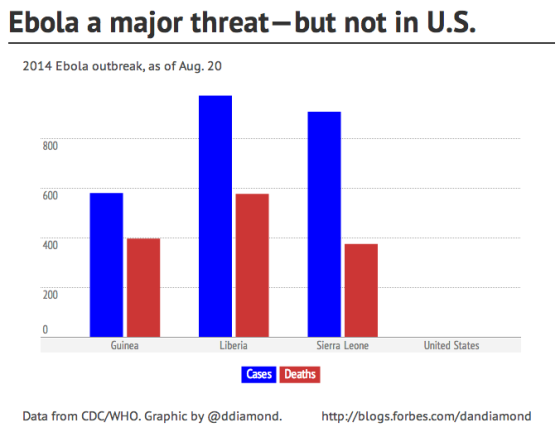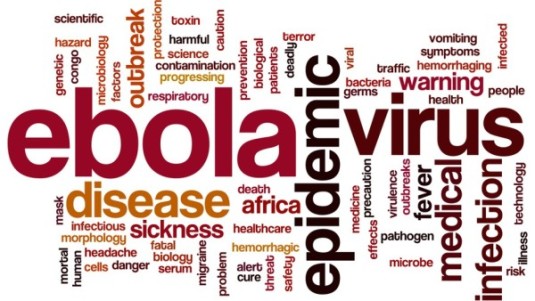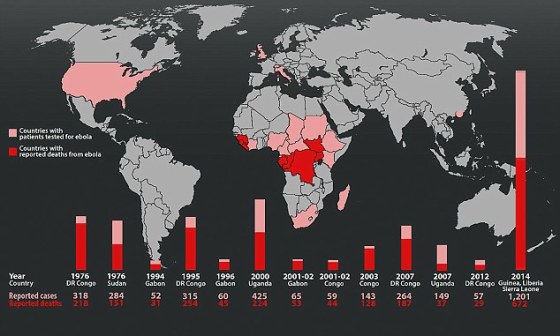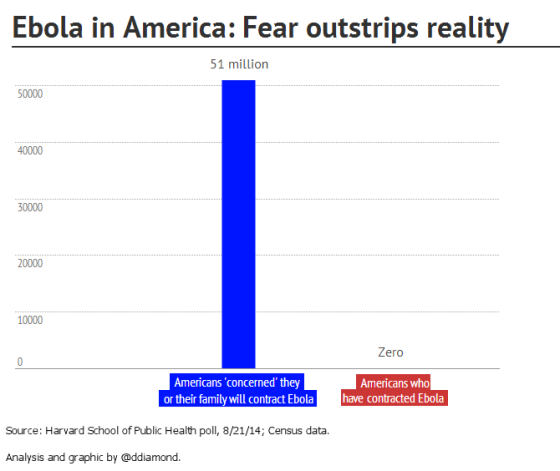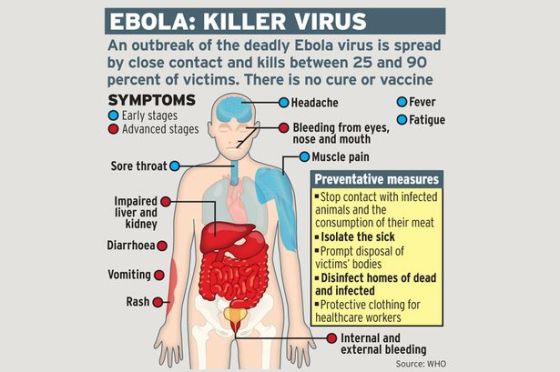Ebola – Ten Facts You Need To Know
One of the world’s rarest yet deadliest diseases, the highly infectious Ebola virus can kill up to 90% of the people who catch it. The current outbreak in West Africa is the largest ever affecting five countries: Guinea, Liberia, Nigeria, Senegal and Sierra Leone. The present mortality rate is about 55%.
Ebola is so infectious, patients need to be treated in isolation by medical staff wearing protective clothing. The virus recently arrived in the U.S. At the time of this writing there is only one confirmed case in Dallas, Texas and several suspected cases in other states. Here are ten facts to keep you and your family knowledgeable and take any necessary precautions.
- Victims have to come in contact with fluids, i.e., blood, saliva, breast milk, stool, semen, tears, vomit and urine or a contaminated object from an infected patient. You can get Ebola by kissing or sharing food with someone who is infectious.
- Symptoms typically include weakness, fever, aches, diarrhea, vomiting and stomach pain. Additional symptoms include rash, red eyes, chest pain, throat soreness, difficulty breathing or swallowing and bleeding (both external and internal; usually in the later stages of the disease). Not all infected hemorrhage blood.
- Ebola is extremely infectious because an extremely small amount can cause illness.
- It can take from up to two days to 21 days before an Ebola infected person(s) starts to show symptoms and becomes infectious according to the Center for Disease Control (CDC). Symptoms may appear anywhere from two to 21 days after exposure to Ebola but the average is eight to 10 days.
- People who are aid workers or who have spent time in West Africa recently have a higher risk. People who travel a lot, especially overseas, could also be at a higher risk.
- According to the World Health Organization (WHO), “there is no specific treatment or vaccine.”
- You can protect yourself from Ebola – and most infections, actually – by washing your hands frequently or using an alcohol-based hand sanitizer. Be sure to use a clean towel to dry your hands.
- You can’t get Ebola from mosquitoes. The CDC says, “Only mammals (for example, humans, bats, monkeys and apes) have shown the ability to spread and become infected with Ebola virus.”
- You can’t get Ebola from someone who isn’t already sick. The virus only turns up in people’s bodily fluids after a person starts to feel ill, and only then can they spread it to another person.
- You usually can’t get Ebola through coughing or sneezing like the flu or measles. Thankfully, the virus isn’t airborne. Experts expect it will never become
airborne. However, the CDC said, “If a symptomatic patient with Ebola coughs or sneezes on someone, and saliva or mucus come into contact with that person’s eyes, nose or mouth these fluids may transmit the disease.” This happens rarely and usually only affects health workers or those caring for the sick.
